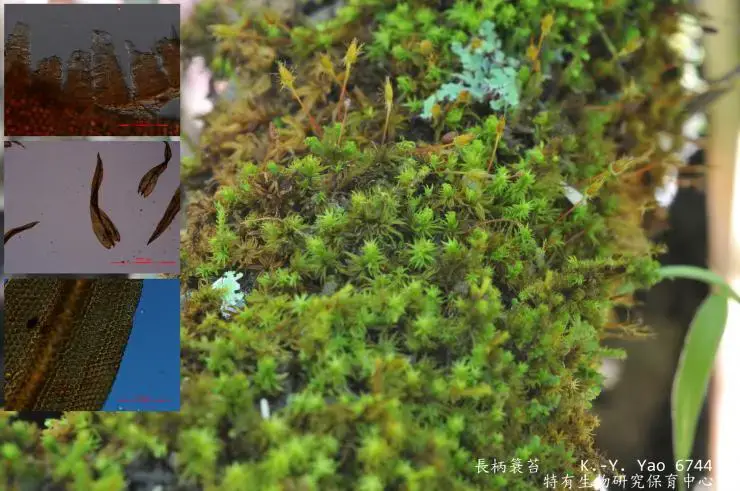
c7eafa3332eca495e4a0a16755d7c4af.jpg from: https://taieol.tw/muse/digi_object/953dc05aecec73a6b55d6e73ee034a13
Exploring the Fascinating World of Macromitrium haitense Thér. Moss
Introduction
Mosses are small but mighty plants that play crucial roles in ecosystems around the world. One particularly interesting species is

large.jpeg from: https://inaturalist.nz/observations/88236610
Macromitrium haitense Thér.

Macromitrium-prolong01l.jpg from: https://www.digital-museum.hiroshima-u.ac.jp/~museum/habit/moss_habit/Macromitrium prolongatum/Macromitrium_prolongatum.html
, a moss in the Orthotrichaceae family. In this blog post, we’ll dive into the details of this fascinating plant, from its morphology to its ecological importance. Get ready to discover the hidden world of Macromitrium!
Background
Mosses are non-vascular plants in the division Bryophyta. They lack true roots, stems, and leaves, instead having simple structures that perform similar functions. Mosses reproduce via spores rather than seeds and are found in a wide range of habitats worldwide. Macromitrium haitense Thér. is one of many moss species that has adapted to thrive in specific ecological niches.
Morphology and Identification
Macromitrium haitense Thér. is a relatively small moss, typically growing in tufts or cushions. Its stems are erect and branched, reaching heights of 0.5-2 cm. The leaves are lanceolate to ovate-lanceolate, with a pointed apex and entire margins. One key identifying feature is the presence of a hyaline hair-point at the leaf tip. The leaf cells are rounded-quadrate to hexagonal, with thick walls.
The sporophytes (spore-producing structures) of M. haitense are erect and emerge from the tips of the stems. The capsules are cylindrical and have a peristome, a ring of tooth-like structures that aid in spore dispersal. The calyptra, a protective cap covering the young capsule, is hairy and covers the capsule entirely.
Global Distribution and Habitat
Macromitrium haitense Thér. is native to the Caribbean, particularly the island of Hispaniola (Haiti and the Dominican Republic). It grows on tree trunks and branches in humid montane forests at elevations of 1000-2000 meters. This specific habitat preference is an example of how mosses have evolved to occupy unique ecological niches.
Ecological Roles and Adaptations
Like many mosses, M. haitense plays important roles in its ecosystem:
Water retention: Mosses act as natural sponges, absorbing and retaining water from rain and dew. This helps regulate moisture levels in the forest.
Nutrient cycling: As mosses decompose, they release nutrients back into the soil, supporting the growth of other plants.
Habitat provision: Mosses provide shelter and microhabitats for various small invertebrates, contributing to biodiversity.
Macromitrium haitense Thér. has several adaptations that allow it to thrive in its montane forest habitat:
- Hairy calyptra: The hairy cap covering the capsule helps protect the developing spores from damage.
- Thick cell walls: The thick walls of the leaf cells help the moss retain water and withstand desiccation.
- Hyaline hair-point: The transparent hair-like structure at the leaf tip may aid in water uptake and reflect excess light.
Conclusion
Macromitrium haitense Thér. is a prime example of the incredible diversity and adaptability of mosses. From its unique morphology to its specific habitat preferences, this small plant reminds us of the complexity and importance of even the tiniest organisms in our ecosystems. The next time you’re walking through a humid forest, take a moment to appreciate the mosses beneath your feet and ponder the hidden worlds they contain. Who knows what other secrets these ancient plants hold?